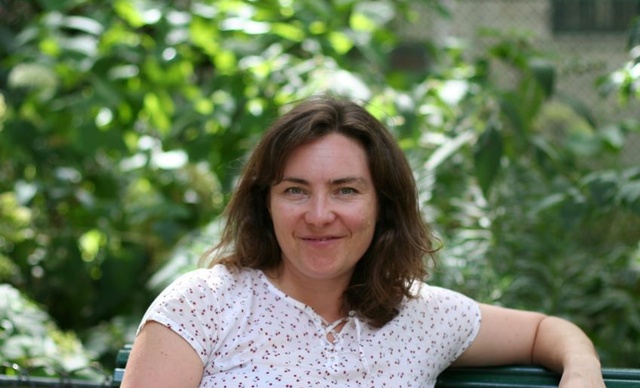COVID-19 and cellular biology: targeting new mechanisms involved in viral replication
Three questions for Kristine Schauer, CNRS researcher at Institut Curie’s Biology and Cancer unit

What is the link between your work on cancerous cells and the study of SARS-CoV-2?
In Bruno Goud’s laboratory, “Molecular Mechanisms of Intracellular Transport”, my team studies the architecture of human cells and its development over the course of diseases such as cancer. Human cells contain many intracellular structures known as organelles. We have learned that organelles are specifically organized in the cellular space and that this organization is important for cellular functions. However, we know very little about what happens to organelles during cancer. This is what we are studying in the lab, using cells cultivated on “micro-patterns”, which is a simplified system allowing us to compare a large number of cells to one another. Using this system, we have shown that there are differences in the organization of organelles between cancerous cells and normal cells, which we are currently studying in detail.
Just like cancerous cells which change their functions to promote uncontrolled spread, the cells infected by a virus are re-programmed to sustain viral production. An interesting fact is that human coronaviruses - of which SARS-CoV-2 is one - need a specific intracellular structure in order to replicate that is specifically known as viral replication compartment (VRC). To produce these VRCs, essential for viral replication, the virus modifies the host’s cellular organelles, but these mechanisms are not well understood.
In collaboration with microbiologists, we have already revealed the intracellular modifications occurring in cells infected by different pathogens, including certain invasive bacteria and the hepatitis C virus. Today we are using our simplified cellular system to identify the host’s cellular machinery essential to establish VRCs. This knowledge could be used to interfere with viral replication, using a therapeutic approach directed against the host.
Can you tell us more about the COVID-19 project that you are coordinating?
The intracellular organelles, as well as the viral replication compartments (VRCs), are made up of specific lipids. In order to replicate, coronaviruses - and probably SARS-CoV-2 - must transfer lipids from the cellular organelles to the VRCs. We are trying to understand how this transfer takes place. Our project is based on the fact that the formation of VRCs presents similarity to a process in which the human cell builds a new organelle, known as autophagosome. The discovery of this process - known as autophagy - was awarded a Nobel Prize in 2016.
Autophagy is a very complex process, not yet well understood, and whose deregulation plays an important role in many diseases, including cancer. Our aim is to develop biosensors that are able to monitor the transfer of lipids when autophagosomes or VRCs are formed. These biosensors could also be used to identify infection by SARS-CoV-2 or other viruses in single cells. In addition, they could be used to identify treatments that interfere with transport of lipids for viral replication, or to study the changes in lipid transport during cancer growth.
What can we expect from this project in terms of therapeutic strategies?
The project aims to reveal new aspects of the biology of SARS-CoV-2 during replication of the virus in human cells. In particular, we would like to identify the host proteins vital to replication of SARS-CoV-2. This will constitute a basis for developing new anti-viral medications that target the host. We believe that our biosensors could be used to directly identify molecules that disrupt the replication of SARS-CoV-2 and to understand their mechanisms of action.
Since our research focuses on the host, our approach could apply, in the longer term, to other viruses that require the formation of VRCs such as HCV, the Zika virus or the African swine fever virus.
